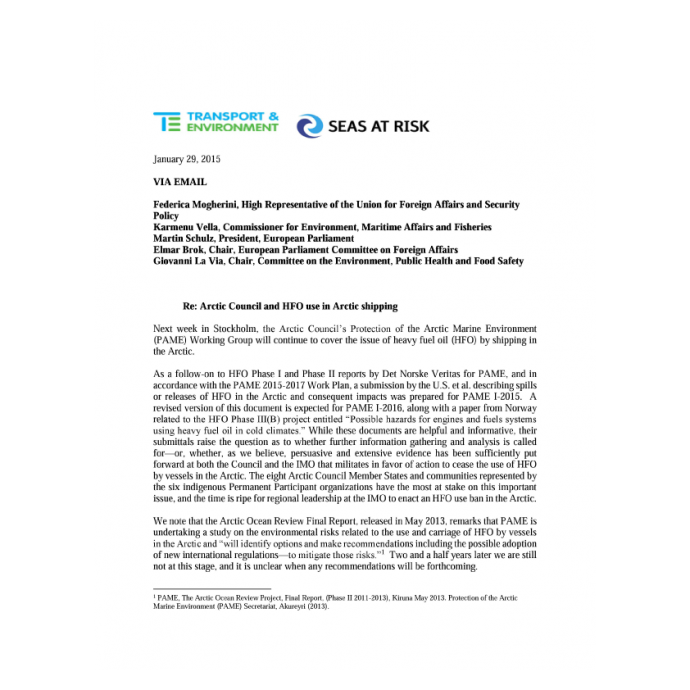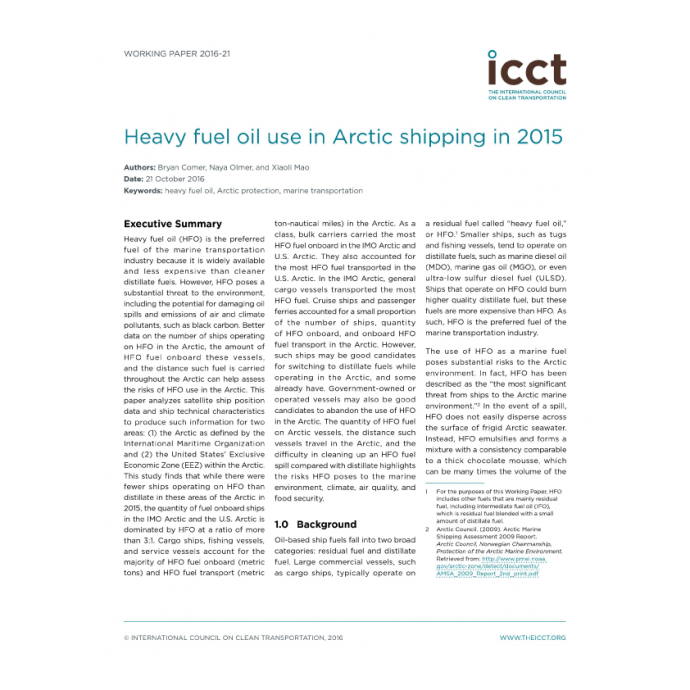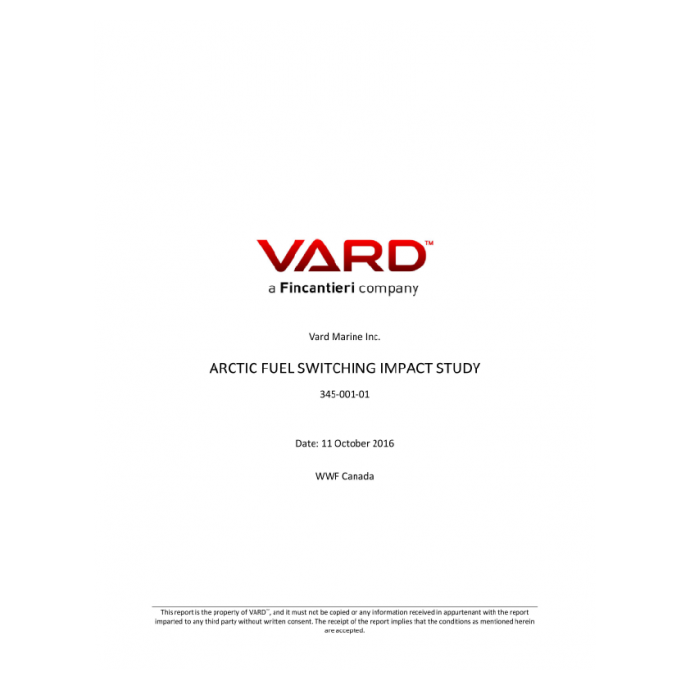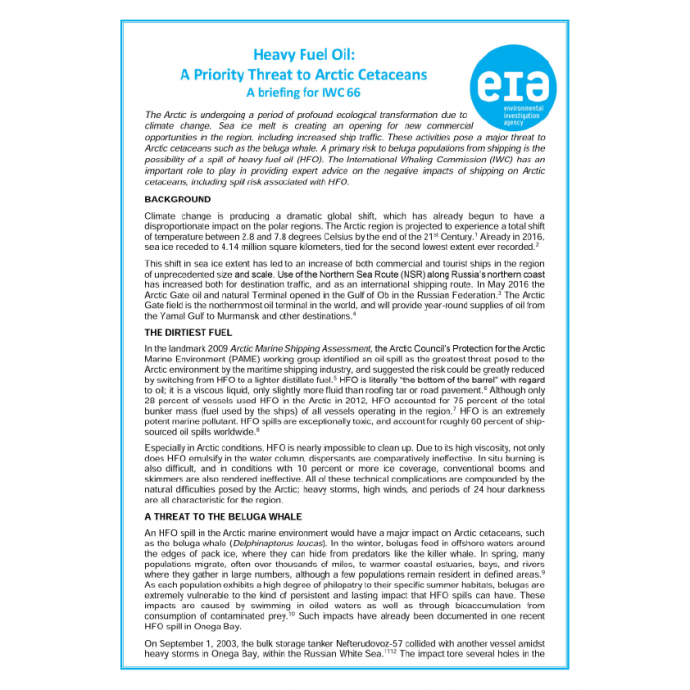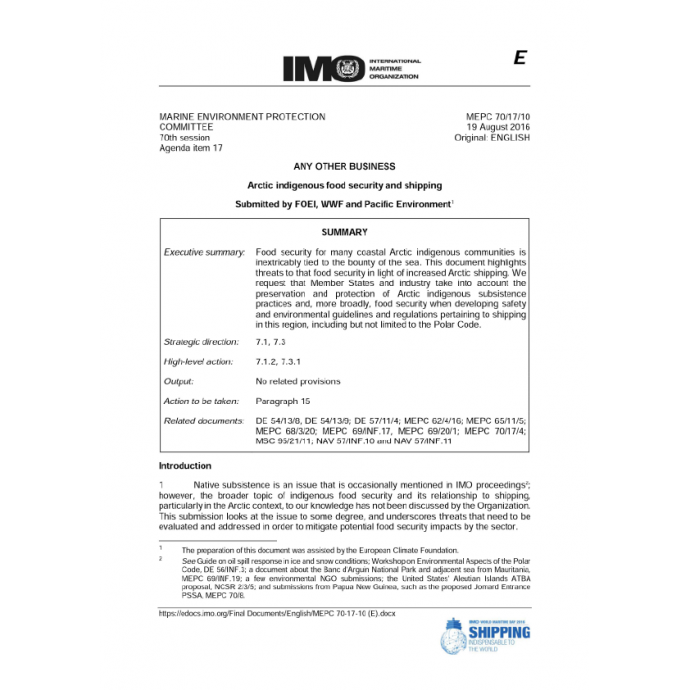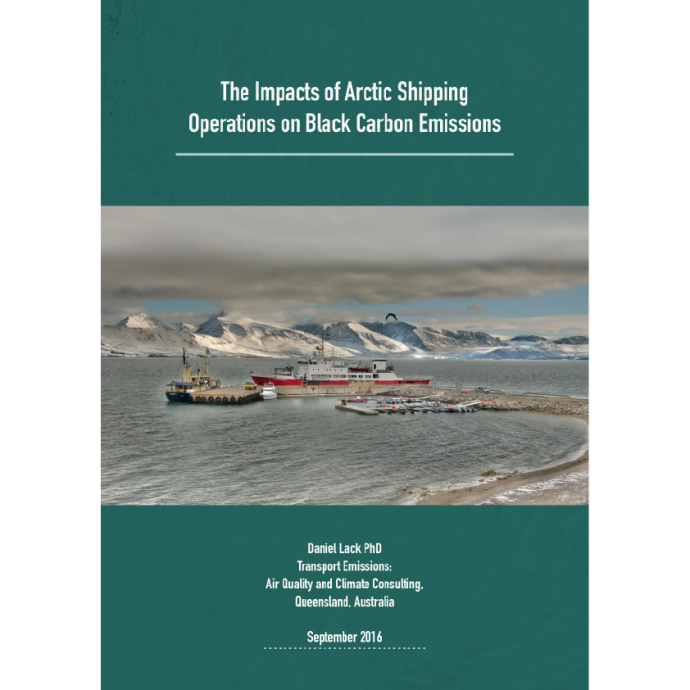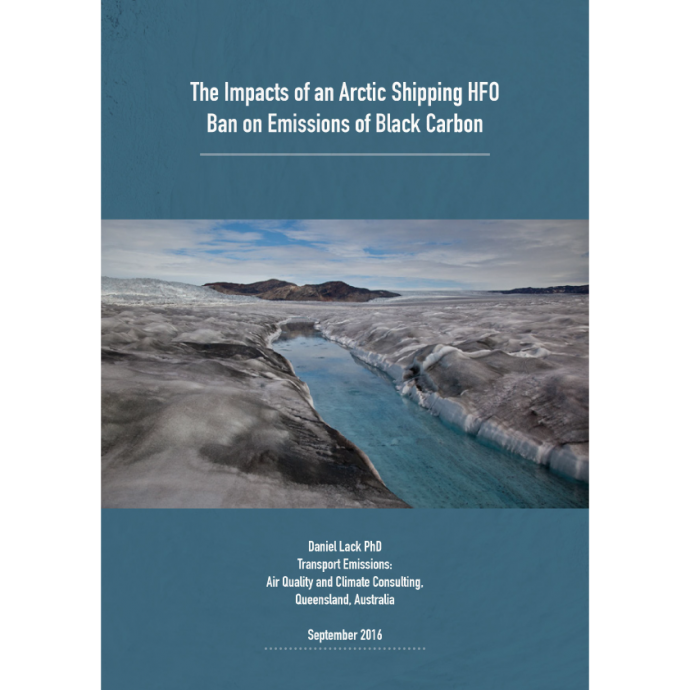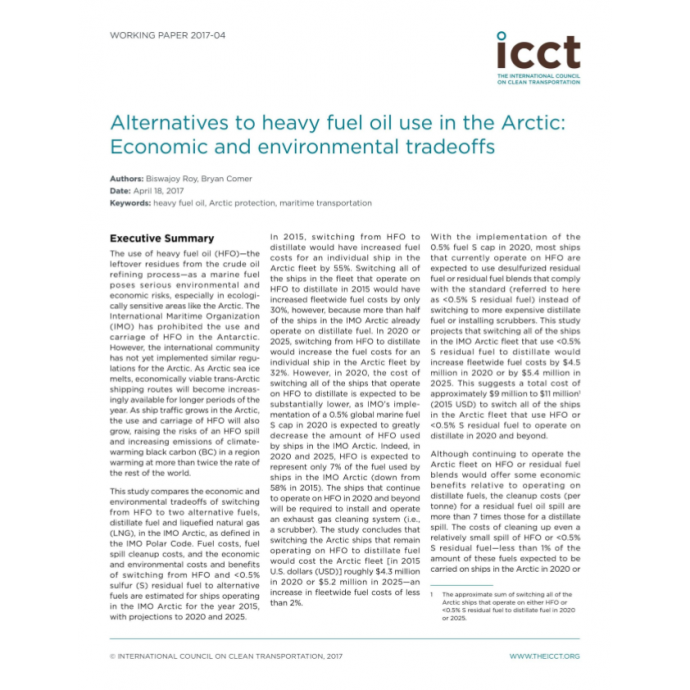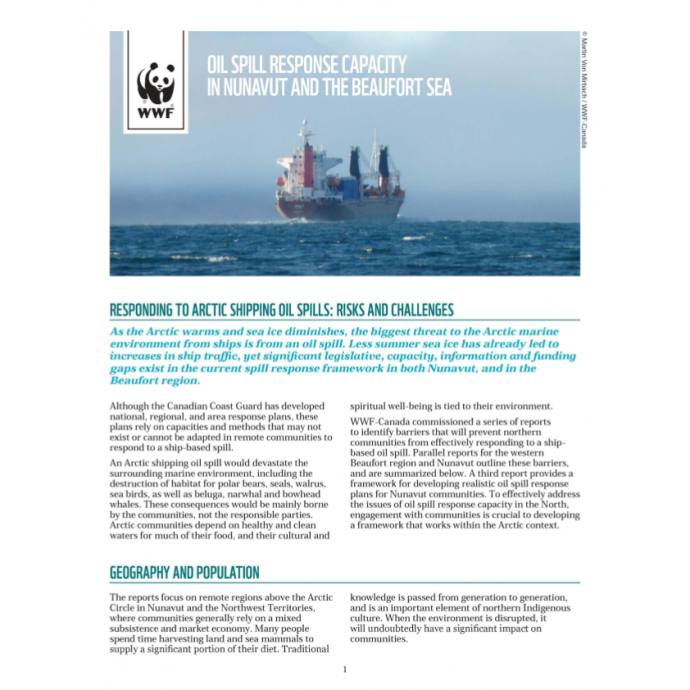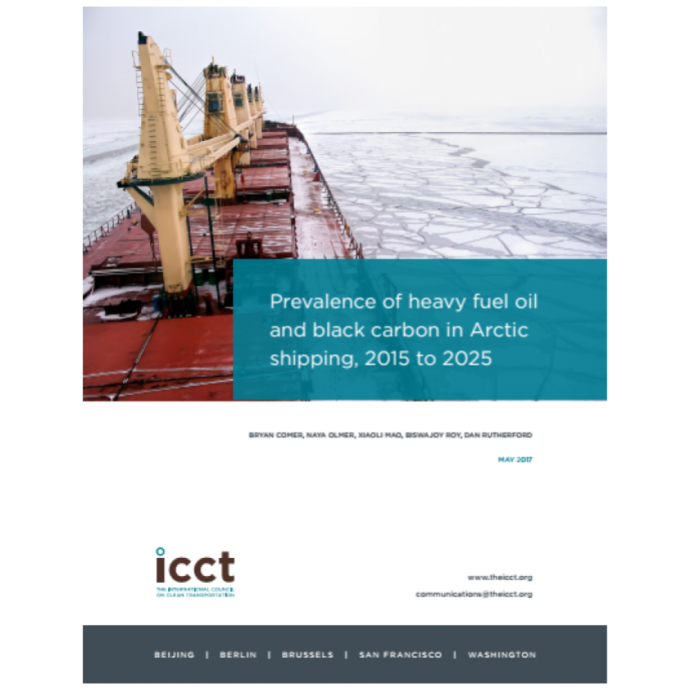Arctic Council and HFO use in Arctic shipping
A letter by Seas at Risk and Transport Environment
This letter addressed to EU officials Federica Mogherini, Karmenu Vella, Martin Schulz, Elmar Brok and Giovanni La Via outlines key asks regarding the discussion of heavy fuel oil use by shipping in the Arctic ahead of the Arctic Council’s Protection of the Arctic Marine Environment (PAME) Working Group, stressing the urgency for action.

